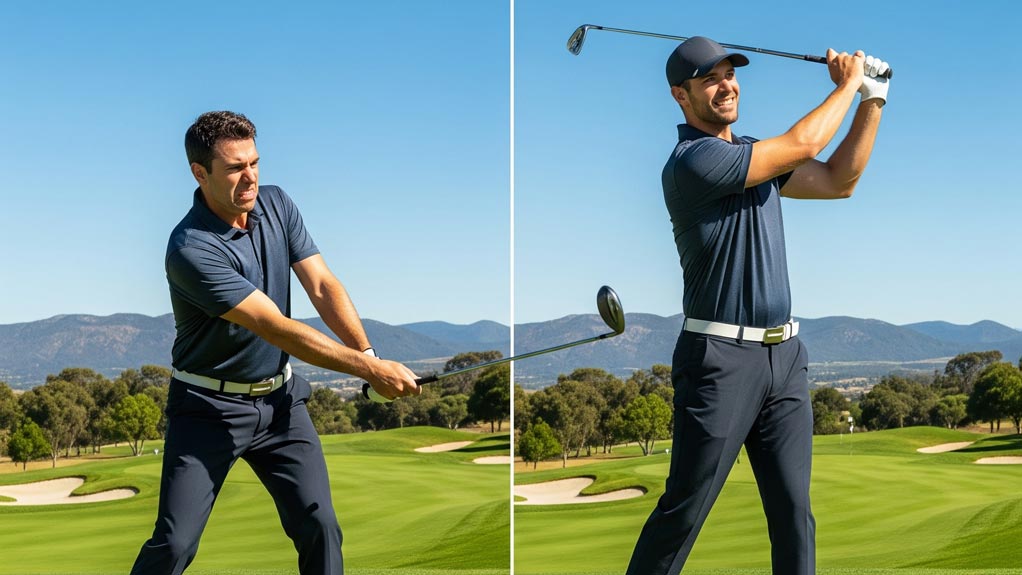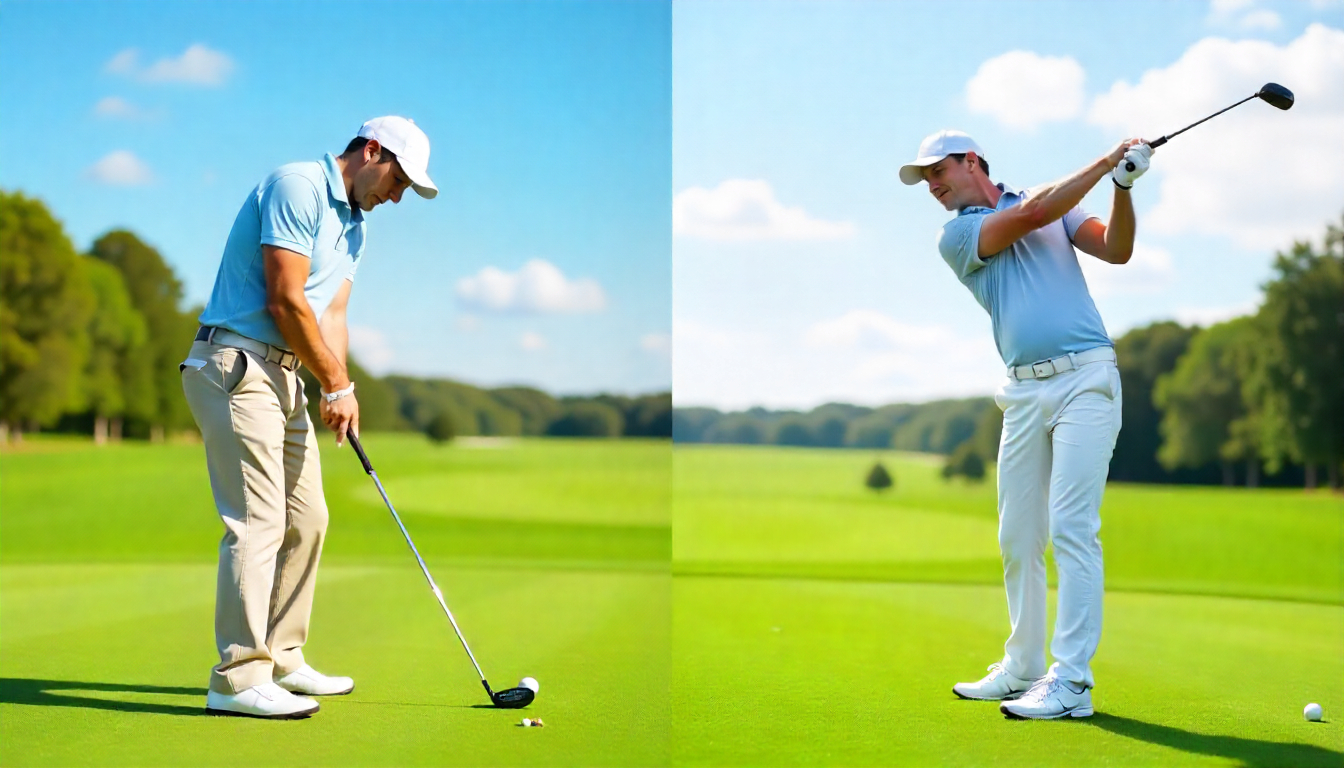
Play Smart, Score Low: A powerful strategy for lowering your scores
Choosing the right set of tees to play from on a golf course might seem like a minor detail, but savvy golfers know it’s a decision that can drastically impact their score and enjoyment of the game. Too many players default to the same tees out of ego, peer pressure, or habit, often to their detriment. This comprehensive guide will help you unlock your perfect tee box nirvana and make smarter choices that lead to lower scores and more satisfying rounds.
A Case Study Example
Here’s an excerpt from a high-handicapper’s Course Strategist Guide playing the GCI Championship Course that gives him a calculation to use when choosing the right distance for his game:
The first strategic decision is made before the first swing: selecting the appropriate set of tees. Playing a course that is too long is the fastest way to frustration and high scores. A reliable guideline for selecting the right tee box is to multiply the player’s average driver distance by a factor of 25 to 28.
- Calculation: 224 yards × 26 = 5,824 yards
- Calculation: 224 yards × 28 = 6,272 yards
This calculation suggests an ideal course length between 5,800 and 6,300 yards. The Gold Tees at 5,955 yards fall perfectly within this range. Playing from the White tees (6,410 yards) would be a strategic error, forcing numerous long-iron and hybrid approaches into greens, which would drastically reduce the already low GIR rate and make the game significantly more difficult.
The Crucial First Step: Know Your Distances
Before even stepping onto the first tee, you need a realistic understanding of your average club distances in a real-world setting. This isn’t about your absolute best-case scenario; it’s about the distance you can consistently hit the ball under normal conditions. Here’s a general guideline:
- Driver: Measure your average carry distance. Don’t rely on roll.
- Fairway Woods & Hybrids: Know your fairway woods and hybrids carry distances.
- Mid-Irons (7-iron): This is often a good benchmark for your iron distances.
- Short Irons & Wedges: Understand your distances with your 9-iron, pitching wedge, gap wedge, and sand wedge.
- Review why your real-world shots are shorter than your simulator or driving range shots
Strategic Sagacity: Playing the Course, Not Just Hitting the Ball
Choosing the right tees isn’t solely about your ability to reach the green in regulation. It involves strategic thinking about the course layout:

- Bunkers and Hazards: Consider where fairway bunkers and water hazards come into play based on your typical drives. Playing from a shorter tee might take these out of the equation.
- Doglegs: Think about the angle of doglegs and how your tee shot shape will work from different tee boxes. A shorter tee might offer a better angle into the green on a sharp dogleg.
- Risk/Reward: Some holes offer risk/reward scenarios. Playing from a longer tee might tempt you to go for it, while a shorter tee could make a safer play more appealing.
- Elevation Changes: Uphill tee shots will play shorter, while downhill shots will play longer. Factor this into your club selection and tee choice.
Assess Your Current Level of Play: Be Honest!
It’s crucial to have an honest assessment of your current golfing abilities:
- Handicap & “Anticap“: Your handicap provides a good general indication of your scoring potential. The closer your “anticap” (a measure of your worst scores) is to your handicap (a measure of your best scores), the more consistent you are. If you have a high handicap and a large gap to your “anticap,” it means you have a high degree of variability in your game, and shorter tees offer more margin for error.
- Consistency: How consistently do you hit your target distances and keep the ball in play? If your game is erratic, shorter tees offer more margin for error.
- Frequency of Good Scores: How often do you shoot your target score? If you rarely reach par or break 80 (or your personal goal), moving up a tee might lead to more enjoyable and confidence-boosting rounds.
Top 10 Reasons Savvy Golfers Choose the Right Tees
For golfers looking to take their game to the next level, smart tee selection is paramount:

- Lower Scores: This is the most obvious benefit. Playing from tees that match your skill level will lead to more greens in regulation and fewer forced shots.
- More Birdie Opportunities: When you’re hitting shorter approaches, you’ll have more chances for birdie putts.
- Increased Confidence: Successfully hitting more greens and scoring better builds confidence in your game.
- Improved Course Management: Choosing the right tees forces you to think strategically about each hole.
- Faster Pace of Play: When everyone is playing from appropriate tees, there’s less searching for lost balls and more efficient play.
- More Enjoyment: Golf should be fun! Playing from tees that are too long can be frustrating and demoralizing.
- Better Practice: When you’re regularly hitting the clubs you’re supposed to be hitting on approach shots, your practice becomes more relevant.
- Reduced Risk of Injury: Over-swinging to try and reach long par-4s can increase the risk of injury.
- Strategic Advantage Over Your Friends: Want to consistently beat your buddies? While they’re stubbornly playing from the tips, you’ll be strategically navigating the course for a lower score.
- Optimized for Your Skill Progression: As your game improves, you can gradually move back to longer tees, providing a natural progression in your golfing journey.
How to Beat Your Friends (The Smart Way)
While raw power is impressive, choosing the right tees to play from can give you a significant edge over your playing partners:
- Play Smarter, Not Harder: If your friends are always trying to bomb it off the tee and ending up in trouble, choose a tee that allows for a more controlled approach.
- Take Advantage of Course Knowledge: If you know a course well, you’ll understand how different tee positions affect each hole. Use this knowledge to your advantage.
- Don’t Be Afraid to Move Up: Ego can be a golfer’s worst enemy. If you consistently struggle from a certain tee, swallow your pride and move up. Your scorecard will thank you.
Other Relevant Considerations:
- Course Slope and Rating: These numbers provide an indication of the course’s difficulty for different skill levels. Pay attention to the recommended handicap ranges for each set of tees.
- Weather Conditions: Wind and rain can significantly impact your distances. Consider moving up a tee in challenging conditions.
- Who You’re Playing With: If you’re playing with significantly shorter hitters, consider moving to a tee that makes the game more enjoyable for everyone.
- The Condition of the Tees: Sometimes, certain tee boxes might be in better or worse condition than others.
- The USGA & PGA of America’s Tee It Forward initiative.

Ready to Transform Your Game?
Stop guessing about choosing the right tees to play from and start playing smarter! Choosing the right golf tees is a fundamental aspect of good course management and a crucial step towards lowering your scores and maximizing your enjoyment of the game.




0 Comments